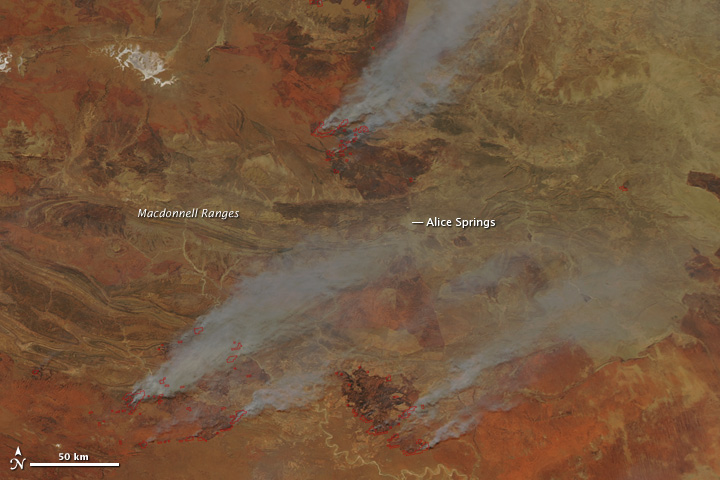Archive for the ‘Environment’ Category
Occupy Philadelphia Reply to the Mayor
Monday, November 14th, 2011Press Conference at Occupy Philly
November 14, 2011
~ 1PM
by Daniel Brouse
CITY HALL, PHILADELPHIA, PA
On November 13, 2011, Philadelphia’s Mayor Nutter held a press conference changing his posture on the Occupy Philadelphia movement. During the show, he reversed his position on the protesters being allowed to obtain a new permit when the current permit expires on the 15th. Following is the response from the Occupy Philly Press Team:
YouTube HD Video: Occupy Philadelphia Press Conference Reply to Mayor Nutter
Occupy Wall Street Occupy Philly
Wednesday, October 12th, 2011Fires!
Tuesday, October 11th, 2011
Smoke clouds the skies across northeastern China and southeastern Russia in this image taken on October 8, 2011, by the Moderate Resolution Imaging Spectroradiometer (MODIS) on NASA’s Aqua satellite. Widespread fires are marked in red.
The dry, windy weather of autumn created hazardous fire conditions in northeast China. On October 9, officials in Heilongjiang, the province shown here, raised the fire alert level to its second-highest level, said Xinhua news. Russian officials, meanwhile, reported monitoring four large wildfires in the Far Eastern Federal District, which includes the area shown here.
References
EMERCOM of Russia. (2011, October 10). Fire situation as of 06:00 10.10.2011. Accessed October 10, 2011.
Xinhua. (2011, October 9). Hundreds evacuated for grassland fire in NE China. China Daily. Accessed October 10, 2011.
Fire!
Monday, October 3rd, 2011
Fires Burning In Australia
Japan Moves 8 Feet and Our Days Are Shortened
Friday, March 18th, 2011Scientists have reported the earthquake moved the main island of Japan by 8 feet (2.4 meters) and shifted the Earth on its axis.
“At this point, we know that one GPS station moved (8 feet), and we have seen a map from GSI (Geospatial Information Authority) in Japan showing the pattern of shift over a large area is consistent with about that much shift of the land mass,” said Kenneth Hudnut, a geophysicist with the U.S. Geological Survey (USGS).
“This shift in the position of the figure axis will cause the Earth to wobble a bit differently as it rotates, but will not cause a shift of the Earth’s axis in space – only external forces like the gravitational attraction of the sun, moon, and planets can do that,” Gross said.
Dr. Roger Musson from the BGS (British Geological Survey) told that the shifting observed after the earthquake was “in line with what you get when you have an earthquake this big”.
The change in the earth’s axis shortened the day by about 1.8 millionths of a second.
Chaos Theory and Tsunami Reach California
Friday, March 18th, 2011Has a tsunami ever affected the United States? Yes… just last week.
Manmade and natural events can change important characteristics of U.S. waterways, ports, and harbors, and investigating those changes are an important responsibility for NOAA’s Office of Coast Survey. Following last week’s tsunami, Coast Survey’s staff and equipment on the West Coast are assisting with detection of submerged debris in critical marine transportation arteries along the coast.
The tsunami left the port at Crescent City, Calif., in a shambles, with marine debris and wreckage above and below the waterline. The U.S. Army Corps of Engineers asked Coast Survey to assist with hydrographic survey support there, to help make sure commercial and recreational vessels can begin to navigate safely and efficiently once again.
The U.S. Coast Guard and the Army Corp of Engineers also asked Coast Survey to survey the federal channel at Santa Cruz, Calif., which also experienced extensive damage and destruction to boats.
Coast Survey staff and navigation response teams have deployed to both port areas, and are coordinating with USCG and USACE to begin the hydrographic surveys.
Using a small boat equipped with powerful echo-sounding SONAR equipment, the teams will search the seafloor for sunken vessels, debris, and other hazards dangerous to commercial shippers and recreational boaters. The teams will also check the areas for shoaling. If the teams find shoaling, they will measure the bathymetry for updating NOAA’s nautical charts of the areas.
The Coast Survey navigation manager based in California is coordinating rapid response survey requests and navigational resources from areas impacted by last week’s tsunami.
Increased Ethanol In Gasoline
Thursday, March 3rd, 2011There are concerns about using ethanol in gasoline. It is possible that ethanol is actually worse for the environment and increasing the rate of global warming; however, the EPA is allowing E15.
E15 (a blend of gasoline and ethanol)
In response to a request by Growth Energy under section 211(f)(4) of the Clean Air Act, the Environmental Protection Agency (EPA) has partially granted a waiver to allow fuel and fuel additive manufacturers to introduce into commerce gasoline that contains greater than 10 volume percent (vol%) ethanol and up to 15 vol% ethanol (E15) for use in model year (MY) 2001 and newer light-duty motor vehicles, subject to several conditions. On October 13, 2010, EPA granted a partial waiver for E15 for use in MY2007 and newer light-duty vehicles (i.e., cars, light-duty trucks and medium-duty passenger vehicles). On January 21, 2011, EPA granted a partial waiver for E15 for use in MY2001-2006 light-duty motor vehicles. These decisions were based on test results provided by the U.S. Department of Energy (DOE) and other information regarding the potential effect of E15 on vehicle emissions. Taken together, the two actions allow, but do not require, E15 to be introduced into commerce for use in MY2001 and newer light-duty motor vehicles if conditions for mitigating misfueling and ensuring fuel quality are met. EPA is in the process of completing work on regulations that would provide a more practical means of meeting the conditions.
Prior to the distribution of E15, fuel and fuel additive manufacturers are required to register the fuel with EPA. For more information on fuel registration visit the Registration and Health Effect Testing page. There are also a number of other actions including changes to various state and local laws that may also affect the distribution of E15.
What is E15?
Ethanol is an alcohol that can be mixed with gasoline to result in a cleaner-burning fuel. The most common blend of gasoline and ethanol is E10, or 10 percent of ethanol to 90 percent of gasoline. E10 was granted a waiver under Clean Air Act section 211(f)(4) by operation of law over 30 years ago. E15 is gasoline containing 15 vol% ethanol.
The primary source of ethanol is corn, but other grains or biomass sources may be used.
What is the E15 waiver?
In order to protect the emission control systems of vehicles and engines, the Clean Air Act prohibits the introduction of fuels or fuel additives that are not substantially similar to the fuels or fuel additives used in certifying vehicles and engines to emission standards. However, the Act authorizes EPA to grant a waiver of this prohibition for a fuel or fuel additive if it can be demonstrated that vehicles and engines using the otherwise prohibited fuel or fuel additive will continue to meet emission standards over their “full useful life” (100,000 or 120,000 miles, depending on the vehicle type and model year).
In March 2009, Growth Energy (a coalition of U.S. ethanol supporters) and 54 ethanol manufacturers applied for a waiver to increase the allowable amount of ethanol in gasoline from E10 to E15. The waiver application included data on the impact of E15 on vehicle emissions, fuel system materials, and driveability. Additional data were developed by DOE, which in 2008 began testing for potential impacts of various ethanol-gasoline blends on emissions of MY2007 and newer light-duty motor vehicles. This testing followed enactment of the Energy Independence and Security Act of 2007, which calls for significantly increasing the amount of biofuels, such as ethanol, to be used in transportation fuel. EPA received over 78,000 public comments about Growth Energy’s application.
Initially, EPA partially granted Growth Energy’s waiver request application. Based in large part on DOE test data, the Agency approved the waiver for and allowed the introduction into commerce of E15 for use in MY2007 and newer light-duty motor vehicles, subject to certain conditions. EPA did not approve the waiver for E15 use in MY2000 and older light-duty motor vehicles, heavy-duty gasoline engines and vehicles (e.g., delivery trucks), highway and off-highway motorcycles, and nonroad engines, vehicles, and equipment (e.g., boats, snowmobiles, and lawnmowers) due to insufficient test data or other information to support a waiver for these vehicles and engines. At the time of the announcement in October, EPA deferred action on E15 for use in MY2001-2006 light-duty motor vehicles until DOE test data for those model years became available.
On January 21, 2011, after DOE test data were made available to the public (see EPA Docket #EPA-HQ-OAR-2009-0211 at www.regulations.gov), EPA took further action on Growth Energy’s waiver request application to approve the introduction into commerce of E15 for use in MY 2001-2006 and newer light-duty motor vehicles, subject to the same conditions that apply to the partial waiver decision for later model year vehicles. Taken together, the two waiver decisions allow the introduction into commerce of E15 for use in MY2001 and newer light-duty motor vehicles if the waiver conditions are met.
What Vehicles May Use E15?
* Flexible-fuel vehicles (FFVs).
* MY2001 and newer cars.
* MY2001 and newer light-duty trucks.
* MY2001 and newer medium-duty passenger vehicles. (SUVs).
top of page
What Vehicles and Engines May Not Use E15?
* All motorcycles.
* All vehicles with heavy-duty engines, such as school buses, transit buses, and delivery trucks.
* All off-road vehicles, such as boats and snowmobiles.
* All engines in off-road equipment, such as lawnmowers and chain saws.
* All MY2000 and older cars, light-duty trucks, and medium-duty passenger vehicles (SUVs).
top of page
What Conditions are Part of the Waiver Decision?
EPA placed two types of conditions on the waiver for E15: those for mitigating the potential for misfueling of E15 into vehicles, engines and equipment for which E15 is not approved, and those addressing fuel and ethanol quality. All conditions must be met prior to the introduction of E15 into commerce.
Fuel quality conditions:
* Ethanol used for E15 must meet ASTM International D4806-10.
* The Reid Vapor Pressure for E15 is limited to 9.0 psi during the summertime.
Misfueling mitigation conditions:
* Labels must be placed on E15 retail dispensers indicating that E15 use is only for MY2001 and newer motor vehicles.
* Product Transfer Documents (PTDs) must accompany all transfers of fuels for E15 use.
* Parties involved in the manufacture of E15 must participate in a survey of compliance at fuel retail dispensing facilities to ensure proper labeling of dispensers.
* Parties must submit a plan addressing conditions to EPA for approval.
top of page
What is EPA doing to Address Potential Misfueling?
EPA is in the process of establishing a regulatory program to help mitigate potential misfueling of vehicles, engines, and equipment for which E15 is not approved. Concurrently with the October 13, 2010 partial waiver decision, the Agency proposed a rule that would require all E15 fuel dispensers to have a label if a retail station chooses to sell E15, and sought comment on separate labeling requirements for fuel blender pumps and fuel pumps that dispense E85. Similar to the prohibition in Clean Air Act section 211(f)(1), the rule would prohibit the use of gasoline containing greater than 10 vol% ethanol in vehicles and engines not covered by the partial waiver for E15. In addition, the rule would require PTDs specifying ethanol content and Reid Vapor Pressure (RVP) to accompany the transfer of gasoline blended with ethanol and a national survey of retail stations to ensure compliance with these requirements. The rule would also modify the Reformulated Gasoline (RFG) program by updating the Complex Model to allow fuel manufacturers to certify batches of gasoline containing up to E15. The measures were designed to help promote the successful introduction of E15 into commerce.
EPA held a public hearing on the proposed rule in November and provided a 60-day public comment period that ended on January 3, 2011.
top of page
Notices and Updates
NOTE: You will need Adobe Acrobat Reader, available as a free download, to view some of the files on this page. See EPA’s PDF page to learn more about PDF, and for a link to the free Acrobat Reader.
Under the authority of Clean Air Act section 211(f)(4), EPA may consider the March 2009 application from Growth Energy for a waiver for a gasoline-ethanol blend with up to 15 vol% ethanol (E15) to be used in non-flexible-fueled vehicles.
EPA reviewed Growth Energy’s application along with available test data, other information and public comments. On October 13, 2010, EPA determined that, subject to compliance with the conditions listed in the waiver decision, a gasoline produced with greater than 10 volume percent (vol%) ethanol and up to 15 vol% ethanol will not cause or contribute to a failure of MY 2007 and newer cars, light-duty trucks and medium-duty passenger motor vehicles to achieve compliance with applicable emission standards over the vehicles’ full useful life. Therefore, EPA partially and conditionally granted Growth Energy’s waiver request for a gasoline-ethanol blend with up to 15 vol% ethanol. On January 21, 2011, EPA took further action on Growth Energy’s waiver request and granted a partial waiver for E15 use in MY 2001-2006 cars, light duty trucks and medium-duty passenger vehicles, subject to the same conditions that apply to the partial waiver for newer light-duty motor vehicles.
* Partial waiver for use of E15 in MY2001-2006 light-duty motor vehicles | PDF Version (22 pp; 2.7MB; January 26, 2011)
* Fact Sheet: EPA Announces E15 Partial Waiver Decision | PDF Version (3 pp; 510K; EPA-420-F-11-003; January 21, 2011)
* Partial waiver for use of E15 in MY2007 and newer light-duty motor vehicles | PDF Version (58 pp, 4.57M, published November 4, 2010)
* Status Update (July 2010)
* Status Update (PDF) (2 pp, 493K, November 30, 2009)
* Extension of Comment Period: Notice | PDF Version (2 pp, 75K, published May 20, 2009)
* Notice of Receipt of Waiver Application | PDF Version (3 pp, 77K, published April 21, 2009)
For further information or assistance, please contact Robert Anderson (anderson.robert@epa.gov) or at 202-343-9718.

















